Growing Cabbage can be a beneficial experience for gardeners and master farmers alike. However, you must have all the information you need about these hardy cruciferous plants to ensure that you get productive crops and healthy vegetables. Although they are usually easy to take care of the plant, knowing what problems you may face while gardening cabbage is wise. Let’s check out 20 common cabbage plant problems below.
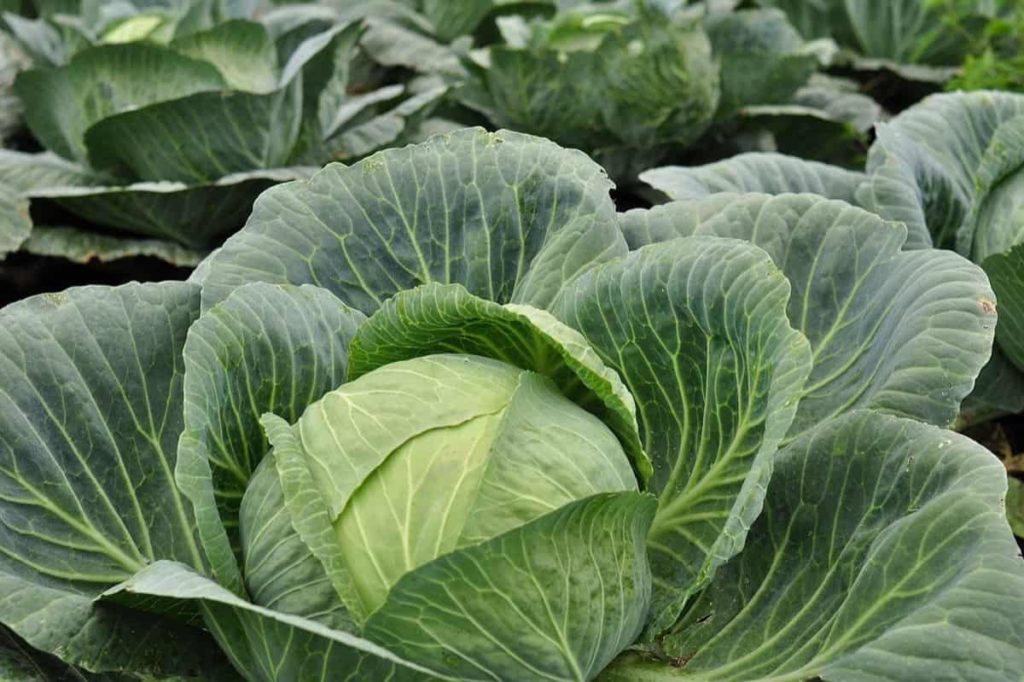
Cabbage plants are easy for most people to grow, but you may face many complex problems. Such problems include turning Cabbage plants unnatural colors. If you have black spots, brown spots, or purple discoloration, you’re likely dealing with either fungal infections or a lack of nutrients in the soil.
20 common cabbage plant problems
Cabbage will not form head
It is one of the most common complaints of many Cabbage growers. You get a lot of leaves, but Cabbage doesn’t make the head. It is called bolting if your Cabbage sends a flower stalk instead of making the head. Bolting is usually in Cabbage when the temperature gets very hot. When the ground temperature goes above a specific temperature, the plant will produce flowers and seeds very quickly and give up the growth of leaves and try to produce the following seed species soon. Once Cabbage plants are bolted, the head won’t makeup, but you can still eat leaves. Harvest them as quickly as possible; otherwise, they will start to taste bitter.
Solution – Cabbage needs consistent moisture but does not require saturated soil. You can do both overwater and underwater, and either one will result in no head. When the soil around the plant dries up, you should water it. To avoid a lack of moisture problems, make sure you water your Cabbage consistently, especially in dry periods, and mulch if necessary.
Other reasons why Cabbage does not make head is:
- Temperature fluctuations – Cabbage can be temperamental in heat and cold for such a simple vegetable. The best temperature for Cabbage is between 8°C to 30°C; if the temperature is permanently below or above it, they will stop growing, fail to make heads, or bolt the seed.
- The wrong Cabbage for the time of year – There are early, mid-season, and late Cabbage varieties. Make sure you choose the right plants at the right time. Follow the seed planting instructions for the type you are going to make.
- Too much nitrogen – If you feed your Cabbage more than nitrogen, it will focus on raising leaves rather than the head. Try to balance the food you give him. Soil testing can help a ton in this process.
In case you missed it: Best Fertilizer for Cabbage: Homemade, Natural, Organic, and NPK
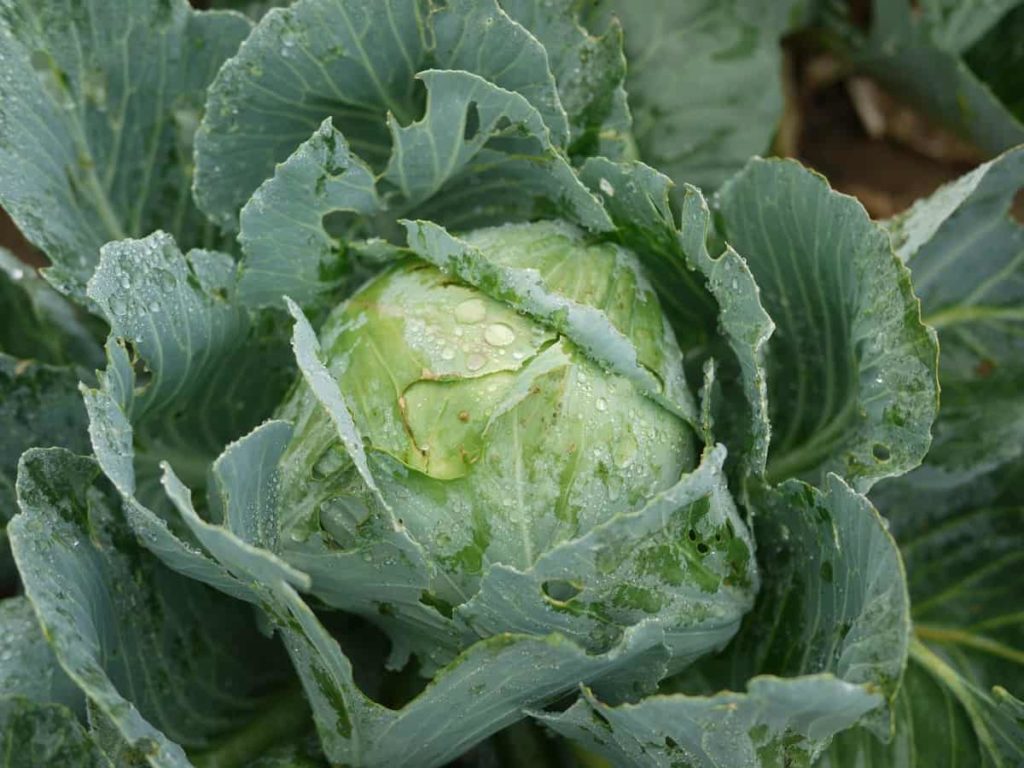
Cabbage has black spots
Many superficial black spots on the inner leaves of Cabbage heads, once thought to be caused by low temperatures, can be caused by changes in temperature. These temperature changes cause the death of cells inside the Cabbage, which is why these black spots present themselves.
Solution – Gardeners watch the amount of heat and sunlight their plants get to deal with internal black spots on Cabbage heads. If you are growing out, you should ensure ideal conditions for your Cabbages. If you are growing indoors, make sure you have enough warmth and light. The indoor gardeners can use LED grow lights to ensure their plants reach the best health. Avoid growing Cabbage in areas that experience severe temperature changes, and give your Cabbage plants moderate amounts of light without scorching.
Heads split and cracks
It is due to overwatering.
Solution – Keep plants moist evenly; avoid wet and dry soil. Do not overwater. If the plants dry, apply water slowly first. Prune the roots to slow down water use and slow growth; do so by turning the head in half for some root break and slow growth. Feed plants with aged fertilizers; avoid nitrogen-rich fertilizers. Harvest plants when they mature. Please do not allow them to sit in the garden for long.
The edges of the leaf inside the Cabbage turn brown
It is sometimes called tip burn; it is one of the many growing problems of Cabbage caused by inadequate water use. It’s not because of insufficient water from you or not enough natural rain. The plant does not take moisture from the soil, resulting in calcium deficiency. You can keep all the calcium in the world in your soil, but it’s lacking if the plant can’t take it.
Solution – Check the soil pH and adjust if necessary. Add limestone as it contains calcium, and the soil becomes ineffective if the soil pH is below 6.0. The perfect soil for Cabbage is between pH 6.0 and 7.0. Some problems also are caused by irregular water, high humidity, and speedy growth (usually caused by overfeeding).
Cabbage turning purple
When green Cabbage plants start to become purple, you can deal with the nutritional deficiency of the soil you have used to plant and deal with poor root health. Soil nutrient levels are secrets to healthy plant growth that many gardeners forget to consider when starting their gardens or crops.
Solution – Soil nutrient levels play a crucial role in gardening that many people do not consider because they do not know of it or have not been informed. Although soil may look visually moist and healthy, there may have been a shortage of nutrients due to previous gardens or crops grown in the area. Often it is as easy to use bone meal supplements in your garden as spreading bone meal powder on and around your plants, but each product has its instructions, so be sure to follow them.
In case you missed it: Cabbage Questions and Answers – Planting FAQs
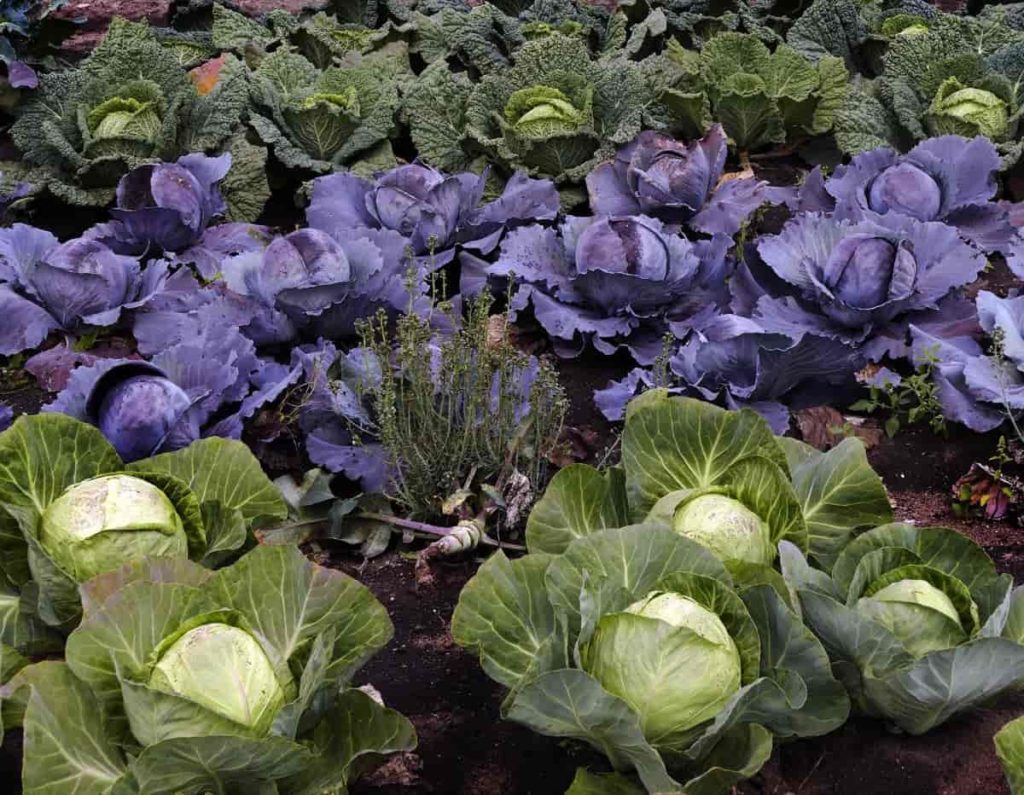
Thick stem and a few usable leaves
You may have cut the Cabbage too late. Leaving the Cabbage head too long will result in a wooden Cabbage.
Solution – Make sure you know which size is best for harvesting the Cabbage you have planted. Some of the commercial varieties sold in shops are huge, while many household varieties are small and are suitable for only one or two meals. Many types are best when they are the size of a softball.
Diseases
Clubroot
Yellow leaves can mean many things, from overwatering to clubroot, a common disease that affects Cabbage. The most obvious signs of the clubroot are yellow, wilted leaves.
Solution – Avoid this problem by keeping your plant healthy and your garden free from insects, weeds, and debris. Also, do not plant Cabbage or other related vegetables (such as Broccoli, Kale, or collard) in the same place year after year.
Black rot
This bacterial disease is common in hot and wet climate areas. Plants can be affected during any growth phase, and symptoms are similar to nutritional deficiency. Infected seedlings turn yellow, drop lower leaves, and can die. Plants affected by contaminated seeds may not develop symptoms for several weeks.
Affected areas are usually of a wage or V shape. As the disease progresses, these areas grow larger, and severely affected leaves may fall. As a result, the infected plants have small heads, and their quality is reduced, making them unfit for marketing.
Solution – Using tolerant types of black rot is the best way to control the disease. A significant reduction in disease has been observed when seeds are treated with Agrimycin-100 or Streptocycline. You should thoroughly inspect plants for symptoms of black rot, and infected plants should be removed and destroyed.
In case you missed it: Cabbage Growing Tips, Tricks, Ideas, and Secrets
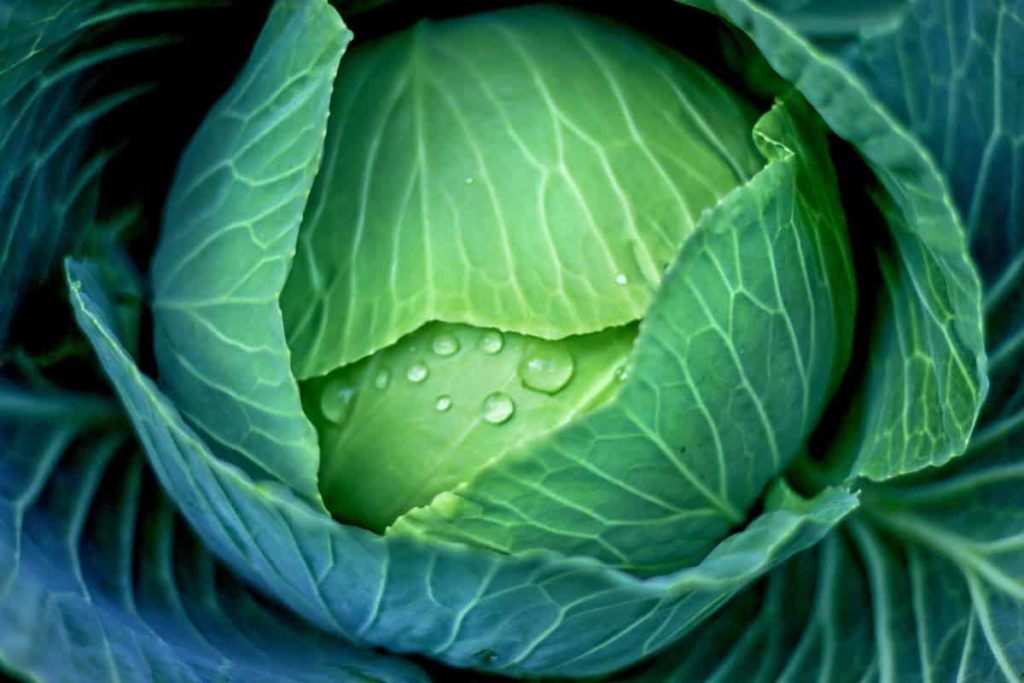
Downy mildew
The first sign observed is small, light green-yellow lesions on the upper surface of the leaf, which later appear at the lower level. The spots turn yellow as they grow. During high humidity, gray-white moldy growth is developed on the leaves under the surface.
Solution – You should irrigate the crop fairly to avoid periods of high humidity. Spraying seedlings in nursery beds with Copper Oxychloride effectively controls the disease. You should give the first spray as soon as the seedling appears. Sprays are then given weekly until the plants are transplanted to the field. Finally, the crop is sprayed with copper oxychloride to control disease in the field.
Leaf spot
Early symptoms occur in small dark yellow spots on the leaf surface.
Solution – The use of disease-free seeds, proper crop rotation practice, and seed treatment with hot water help reduce the disease incidence. Crops grown for seed purposes should be sprayed at full bloom, pod set, and pre-harvest stage with Captan or Copper Oxychloride to control the disease.
Yellow or fusarium wilt
This disease affects the seedlings at the nursery stage; however, plants show symptoms 2 to 4 weeks after transplant. Hot weather conditions promote the growth of diseases. Early signs appear as yellow-green growth on one side of the plant.
Solution – Conventional controls such as rotation, seed treatment, fungicide spray, and crop denial destruction are of little value once they establish themselves in a field. Therefore, the use of resistance types is the only control. However, the weak phase of the young seedling for infection as a safety measure can be avoided by sowing Cabbage very quickly.
Pests
Cabbage worm
It is a caterpillar that damages plants, but keeping an eye on the butterfly and eggs, which are small, yellow, and placed under leaves, is an excellent way to address any problem.
Solution
- Salt and water – Mix 2 tablespoons of salt in a gallon of water. Pour this mixture into a spray bottle and spray the solution directly onto insects and leaves. These worms are susceptible to salt and usually die within a day or two.
- Cayenne Pepper Powder – Mix 2 to 3 tablespoons of the cayenne pepper powder in half a gallon of water and boil it. Let the cayenne pepper stand in the water for 30 to 45 minutes. The powder can be replaced by a half cup of chopped, dried cayenne pepper. Let the chopped peppers stand for 30 to 45 minutes. Spray the solution after it cools down.
- Garlic spray – Another option is to use garlic spray that discourages butterflies from laying eggs on your plants. It works for various June bugs, squash bugs, aphids, and other insects. Adding a little mint or neem oil to it can also be beneficial.
- Neem oil – Neem oil is a natural pesticide that can help eliminate caterpillars and other soft-bodied insects in the garden. You can sprinkle neem oil on Cabbage insects to kill them. Neem oil can also be sprinkled on plants to help repel the moths and butterflies from laying eggs.
- Add eucalyptus oil – Add 8 to 10 drops of essential eucalyptus oil to the cayenne water and mix well. A mixture of cayenne pepper, eucalyptus oil, and mist both up and down the leaves at the highest risk of Cabbage worms.
- Make homemade sprays – Mix 1/4 cup vinegar, 3/4 cup water, and one teaspoon of soap simultaneously. Spray up and down the leaves, very little. To use this spray, you’d like to ensure you don’t saturate the leaves and that your plants are not small seedlings.
In case you missed it: Growing Cabbage In Polyhouse – Greenhouse In India

Cabbage diamondback mouth
It is one of the most severe Cabbage worms grown in relatively high-temperature conditions. The caterpillars are green or brown-green. Adult females lay eggs on leaves in groups. When emerging, small thin green caterpillars eat leaf epidermis and later holes in leaves.
Solution – Spray with malathion or profenofos gives the best control of larvae. Mustard intercrop was effective in Cabbage crop 15 days before sowing and 25 days after planting Cabbage. As pests prefer mustard, many insects are attracted to it, which can be destroyed by spraying the crop with dichlorvos.
Leaf webber
It is one of the most destructive Cabbage pests. Eggs are placed in clusters at the surface of leaves and held together by gelatine glue. As a result, the formation of flowers and pods is badly affected.
Solution – Removing and destroying webbed bunches helps prevent the further spread of the disease. In addition, dusting the crop with carbaryl or spraying with malathion is effective.
Cabbage borer
An adult female lays eggs on old leaves. Yellow caterpillars mine leaves, eat shoots, and finally bore in the stem. As a result, infested plants are killed or develop side shoots, which do not make heads.
Solution – Spraying the crop with malathion or dusting carbaryl gives the best control of larvae.
In case you missed it: Growing Hydroponic Cabbage, Planting, Care, Harvesting
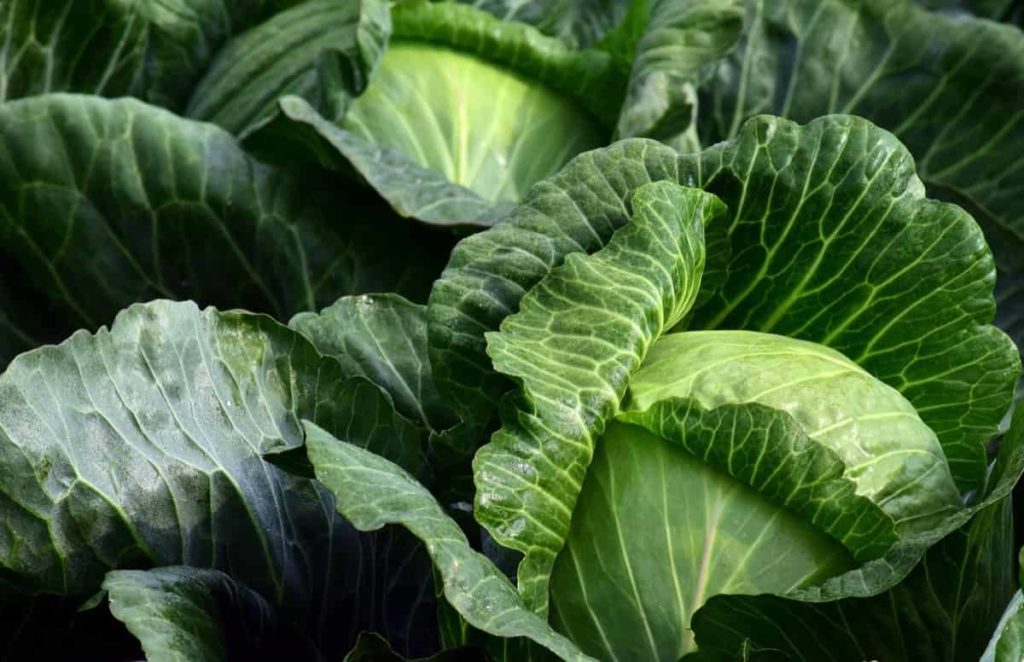
Aphides
Yellow-green nymphs and adults suck the juice and make plants unhealthy. The affected parts become colorless and damaged. More moisture favors the rapid multiplication of this pest; if it is observed at the lower level of most of the leaves.
Solution – A spray of Monocrotophos or malathion at intervals of 10 to 15 days effectively contains the aphid’s population.
- How to Grow Tomatoes Organically at Home: A Comprehensive Guide
- Organic Gardening on a Budget: Low-Cost Methods and Materials
- Gongura Seed Germination and Planting Methods
- Cabbage Seed Germination and Selection
- Broccoli Seed Germination and Selection
- Asparagus Seed Germination and Variety Selection
- Seasonal Flower Gardening: Best Practices for Spring, Summer, Fall, and Winter
- How to Grow Hibiscus from Flower
- Plantation Ideas for Home Decoration: A Beginners Guide
- Flower Garden Designs and Layouts for Beginners
- Planting and Spacing Techniques in Papaya: A Beginner’s Guide
- Growing Gold: Essential Techniques for Planting Pineapples
- How to Make Kalanchoe Plant Bushy: Home Remedies and Solutions
- 11 Reasons Why Your Gardenia is Not Blooming: Home Remedies and Solutions
- Eco Elegance: The Guide to Designing a Drought-Tolerant Landscape
- Gardening on a Slope: Strategies for Hillside Landscaping
- Nourish and Flourish: Top Organic Mulches for Thriving House Plants
- Everything You Want to Know about Indian Mogra Flower: Discover Uses and Growing
- Green Thumb Success: Expert Tips for Cultivating Greenhouse Pumpkins All Year Round
- Maximize Growth & Flavor: The Ultimate Guide to Companion Planting in Herb Gardens
- How to Control Rhododendron Problems Naturally: Home Remedies and Organic Ways to Fix Them
- Natural Magic: The Remarkable Benefits of Cinnamon for Plants
- Best Steps to Revive Dying Tulip with Natural and Organic Treatment
- 10 Reasons Why Your Angel Trumpet is Not Blooming: Remedies and Treatment
- How to Fix Periwinkle Leaf and Flower-Related Problems: Natural Remedies and Solutions
- How to Fix Zinnias Leaf and Flower Problems: Discover Natural and Home Remedies
- Organic Steps to Induce Lemon Tree Flowers: A Comprehensive Guide
- Bloom Booster: Crafting the Perfect Homemade Bougainvillea Fertilizer
- Optimizing Growth: A Guide to Applying NPK Fertilizer for Potted Plants
- 10 Best Homemade Fertilizers for Rubber Plant: DIY Recipes and Application Method
- How to Boost Female Pumpkin Flowers: Effective Steps for More Flowers and High Yields
- Transform Your Indoor Garden: Top Benefits of Pink Salt for Houseplants
- 10 Best Homemade Fertilizers for Peacock Plants (Calathea): Easy DIY Guide
- Unlock Blooms: 9 Reasons Why Your Potted Chrysanthemum is Not Blooming
- 8 Reasons Why Your Potted Hibiscus is Not Blooming: Fix it with Simple Solutions
- Unlock Blooms: 9 Key Reasons Your Potted Frangipani Won’t Flower